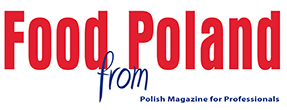Despite the embargo on some groups of food products, the value of food sales to Russia increased by 23% year-on-year. The value of exports to Ukraine is also growing (a 24% increase in comparison with 2016) and Moldova (a 24% increase) as well as Kyrgyzstan (a 40% increase). In total, sales to the CIS countries account for 5% of total exports.
Another important market for our agri-food products is the United States – in the last year, the value of sales on this market increased by as much as 40% and constitutes 2% of the value of foreign sales of Polish food.
The largest exported product group is livestock, meat and meat products – which is responsible for 21% of the sales value. As part of this group, in the first position, we sell poultry meat and products, followed by beef and beef products, with pork holding the third position. The Polish export hit is chicken wings, which are increasingly sold to Far Eastern markets. The second group in terms of the value of exports is cereal grains and their products, the third is tobacco and tobacco products, where the value of exports is generated mainly by sales to foreign markets of cigarettes manufactured in Poland by international tobacco concerns. Important groups are also dairy products, as well as sugar and confectionery products, among them chocolate products, which we sell very effectively to Eastern and Middle Eastern markets. Both commodity groups account for 8% of the value of exports. For several years, the export of fish and, above all, processed fish products has been growing rapidly (currently, this group already has a 7% share in the value of sales), and fruits and fruit products – a 5% share in exports.
Considering the above-mentioned values and the dynamics of Polish food exports, the results of a survey carried out in mid last year by the KPMG consulting company among 110 Polish companies exporting food products are not surprising, showing that only 10% of respondents indicated that they are dissatisfied or rather dissatisfied with sales success abroad. According to the respondents, the highest quality of the products sold, the trust that the exporters have been building for several years, and the professional sales service combine to contribute the most important factors to the success. The price level at which Polish products are offered was indicated only as 7 out of the top 10 most important success factors. Polish producers are appreciated for using the latest production technologies, exemplary control of the entire production process from ‘egg to finished poultry product’, and for very high flexibility in adapting recipes to consumer flavour preferences in target markets (e.g. for several years Polish herrings in cream have won competitions in Germany for the tastiest products from this group).
As the main barriers to the development of exports of Polish food and agricultural products, the respondents indicated currency risks, barriers resulting from the political situation in recipient countries, as well as unclear procedures and bureaucracy associated with obtaining the necessary certificates and permits.
Considering the structure of retail trade in EU countries – particularly in the so-called ‘old EU’ – it is very difficult for Polish exporters to sell products under their own brands. The costs they would incur for the promotion of their own trademarks and the introduction of products to retail chains, which are responsible for the lion’s share of grocery trade, mean that few entrepreneurs decide on entering the markets under the banner of their own brands. Most producers decide to produce PLB (Private Label Brands) for leading retail chains. In this area, Polish entrepreneurs are scoring increasing wins over their counterparts from the western part of our continent. Most of the major food producers in Poland, with the aid of, among other measures, EU assistance programmes, have radically modernised and expanded their production facilities. In this manner, a major strategic advantage was created for producers from the countries of the ‘old union,’ whose plants were built at the turn of the century and are unable to compete with us in terms of cost effectiveness of production or new processing technologies. The second competitive advantage which we are still effectively using is access to a relatively cheaper workforce. These two advantages increasingly allow Polish entrepreneurs to win tenders for the production of processed foods for Western chains. The increase in sales to these channels would probably be even higher, if it were not for local protection programmes and ‘consumer patriotism’ movements, which force the chains to produce a certain part of the products sold in the country in which they operate.
However, in the case of Eastern and Far Eastern markets, the sale of Polish products under own brands is easier. This is due to two reasons – first of all, ‘traditional’ trade is still the dominant retail channel – it is easier to introduce a new brand for sale; and secondly, products marked as being produced in Europe are perceived by local consumers as being of much higher quality than their domestic products. The Chinese market is especially eager to buy Polish products with the ‘Made in EU’ label; but likewise, there is the growing tendency to eagerly reach for the ‘Made in Poland’ products.
Maciej Szatkowski, Senior Manager Consulting Services Department of the Advisory Team for the FMCG sector at KPMG in Poland












